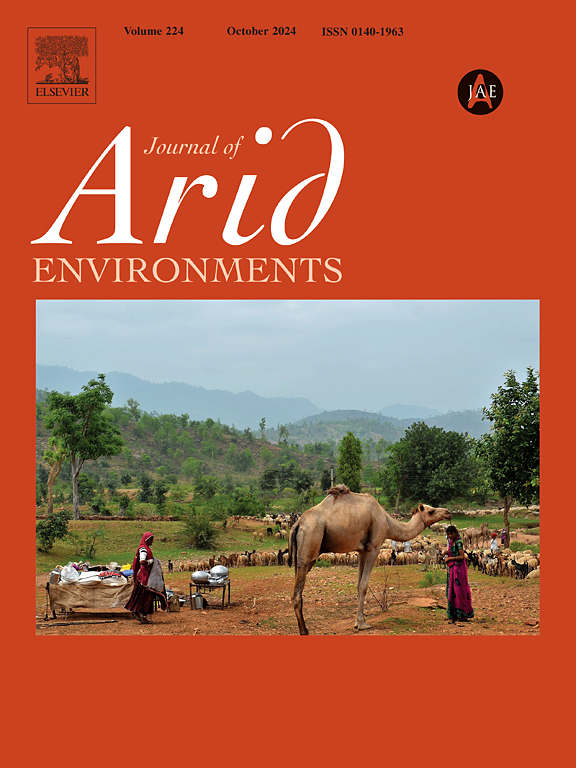Leaf traits of the mistletoe Erianthemum dregei and its host tree Sclerocarya birrea vary across a rainfall gradient and levels of hemiparasite infection
IF 2.6
3区 环境科学与生态学
Q2 ECOLOGY
引用次数: 0
Abstract
Certain trees in semi-arid environments are surpassing their physiological thresholds because of erratic rainfall and rising global temperatures. Mistletoes (Loranthaceae) may also be making large trees more susceptible to the physiological stress imposed by climate change. Therefore, we examined intraspecific variations of selected leaf traits of the mistletoe, Erianthemum dregei, and Sclerocarya birrea host trees along a rainfall gradient at three levels of mistletoe infection. We measured seven leaf traits across five mistletoe-host pairs at low, medium, and high rainfall sites. Rainfall had significant effects on all measured traits, except host leaf succulence. Hosts were more resource-acquisitive at intermediate rainfall, but more conservative at high rainfall. The reverse is true for mistletoes. Mistletoe infection only had an effect on host leaf area, specific leaf area, and stomatal conductance, but most mistletoe leaf traits were significantly influenced by infection intensity. Uninfected hosts were more resource-conservative, but highly infected hosts were resource-acquisitive. Conversely, mistletoes on low-infected hosts were associated with high resource acquisition, while those on high-infection trees were resource-conservative. Therefore, the antagonistic response of host trees and mistletoes to infection and rainfall suggests the potential for resilience to environmental change.
槲寄生Erianthemum dregei及其寄主树硬核树(Sclerocarya birrea)的叶片性状随降雨梯度和半寄生虫感染水平的变化而变化
由于降雨不稳定和全球气温上升,半干旱环境中的某些树木正在超过其生理阈值。槲寄生(罗兰科)也可能使大树更容易受到气候变化带来的生理压力。因此,我们在槲寄生感染的三个水平上,沿着降雨梯度研究了槲寄生、白菊和白核果寄主树的选定叶片性状的种内变化。我们在低、中、高降雨量的地点测量了5对寄生对的7个叶片特征。降雨对除寄主叶片多肉质外的所有性状均有显著影响。在中降雨时,寄主的资源获取性较强,而在高降雨时则较为保守。槲寄生的情况正好相反。槲寄生侵染对寄主叶面积、比叶面积和气孔导度均有显著影响,但侵染强度对大部分槲寄生叶片性状均有显著影响。未感染的宿主具有资源保守性,而高度感染的宿主具有资源占有性。相反,寄生在低侵染树上的槲寄生具有较高的资源获取能力,而寄生在高侵染树上的槲寄生具有资源保守性。因此,寄主树木和槲寄生对感染和降雨的拮抗反应表明它们对环境变化具有恢复力的潜力。
本文章由计算机程序翻译,如有差异,请以英文原文为准。
求助全文
约1分钟内获得全文
求助全文
来源期刊

Journal of Arid Environments
环境科学-环境科学
CiteScore
5.70
自引率
3.70%
发文量
144
审稿时长
55 days
期刊介绍:
The Journal of Arid Environments is an international journal publishing original scientific and technical research articles on physical, biological and cultural aspects of arid, semi-arid, and desert environments. As a forum of multi-disciplinary and interdisciplinary dialogue it addresses research on all aspects of arid environments and their past, present and future use.
 求助内容:
求助内容: 应助结果提醒方式:
应助结果提醒方式:


